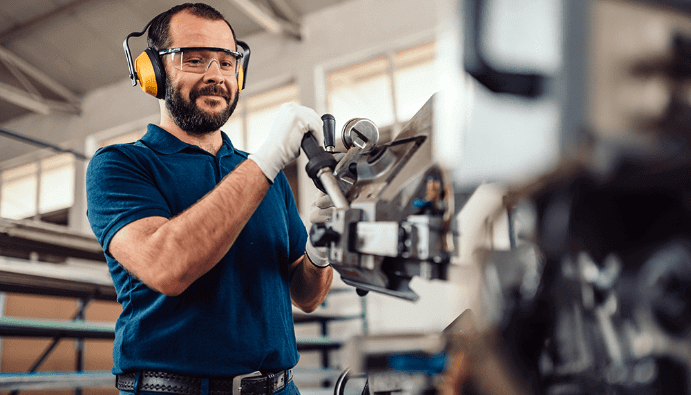Noise Measurement in the Workplace: Employee Health
Noise Measurement in the Work Environment

What is Noise Measurement?
Noise measurement is the process of evaluating sound levels in an environment. These measurements are usually made in decibels (dB) and are used to assess the impact of sound levels in a workplace on hearing health. Noise measurement helps to determine whether sound levels in the workplace are safe. The following factors can affect noise levels in the workplace:
- Machinery and equipment: Heavy machinery, production machinery and vehicles can cause noise.
- Human voices: Conversations between workers, phone calls or voice prompts can also cause noise.
- Building and environmental factors: Factories, office buildings and other structures can increase indoor noise.
Why Noise Measurement is Important
Noise measurement in workplaces is very important for the following reasons:
- Hearing Health Protection
- Excessive noise can cause permanent hearing loss. Continuous exposure, especially above 85 dB, can lead to hearing loss over time. Noise measurements ensure that these levels are respected.
- Stress and Psychological Effects
- High sound levels can create stress for workers. Noise impairs concentration, affects the nervous system of workers and has a negative impact on general mood.
- Productivity and Performance
- High noise can distract workers and reduce productivity. Controlling sound levels improves the working environment in the workplace and increases productivity.
- Legal Compliance and Regulations
- In most countries, there are legal regulations to ensure that certain noise levels are not exceeded in the workplace. Failure to comply with these regulations can lead to penalties for the employer. Measuring noise levels in the workplace ensures that these legal requirements are met.
Methods and Equipment Used in Workplace Noise Measurement
The main methods and equipment used in noise measurement are as follows:
- Decibel meters (Sound Level Meter)
- It is the most widely used equipment. A decibel meter measures the intensity of sound in the environment and expresses the level of sound in decibels (dB). These devices are usually portable and can be used at different points in the workplace.
- Sound Spectrum Analyzers
- They are devices that examine the frequency components of sound. These devices analyze the frequency range of noise and show whether certain frequencies have a greater impact on workers.
- Dosimeters (Personal Noise Meters)
- Portable devices that measure noise exposure. Workers can wear these devices throughout the day to measure their noise exposure. Dosimeters assess the health effects of noise exposure on workers, especially in the workplace.
- Automated Monitoring Systems
- These systems provide continuous noise monitoring in the workplace, allowing noise levels to be recorded instantaneously. It alarms when high noise levels are detected and keeps a record of the data.
Nanolab Laboratories Group continues to provide services within the scope of Noise Measurement in the Workplace. We also provide services in Thermal Comfort Measurement in the Workplace.
Contact us for more information.
You can follow us on LinkedIn for up-to-date news and posts about our services.
Follow our Instagram account to be informed about our latest blog posts.

